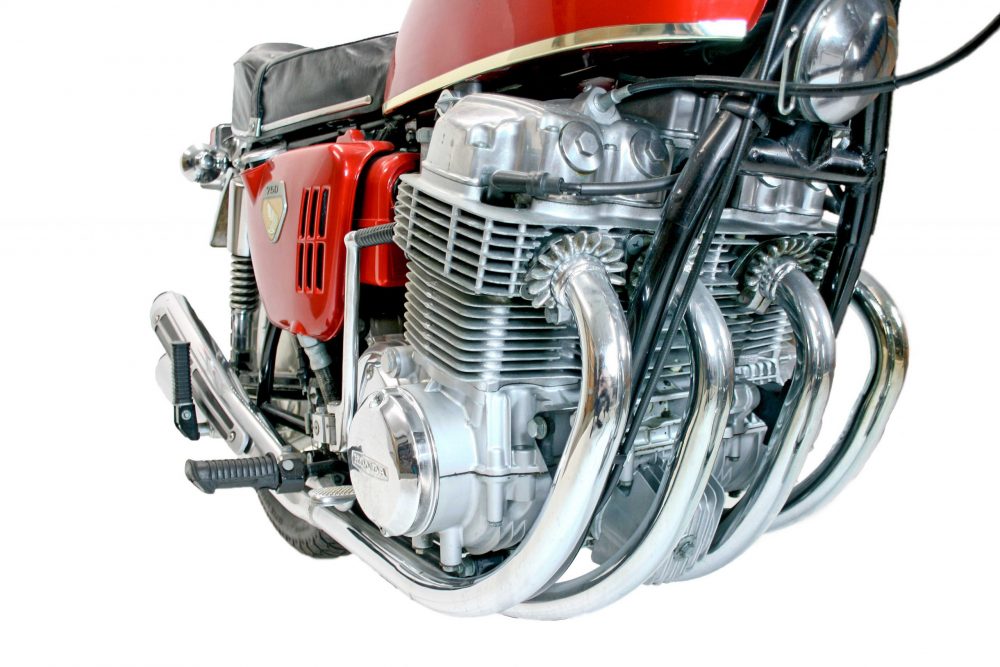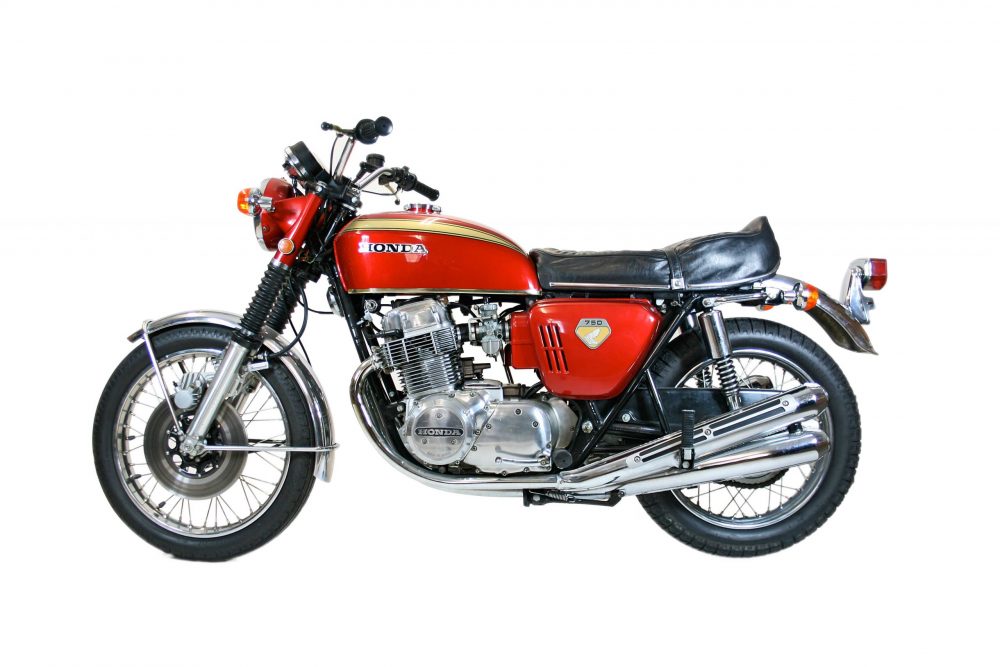The year is 1969. It’s the year in which astronauts Neil Armstrong and Edwin Buzz Aldrin land on the moon, and the Boeing 747, the world’s first jumbo jet, makes its maiden commercial flight.
Meanwhile the Vietnam War has reached its watershed; John Lennon and Yoko Ono stage their famous bed-in protest; 500,000 mostly young people gather at Woodstock for three days of Peace and Music; and Levi release a new line in jeans – with bell bottoms.
That’s the stage upon which the Honda CB750 made its debut. It’s a time of significant change, a time when, in Western countries at least, old-age conservatism is fast receding in the face of new-found freedoms and values.
The timing for Honda couldn’t have been better.Not that Honda exactly planned it that way, but Japan’s foremost motorcycle manufacturer didn’t waste any time when it realised the world’s richest motorcycle market, the USA, was ready for the motorcycle of the future.
Honda had previously looked to the demands of the North American market via the twin-cylinder CB450. At that time British 650cc twins, mainly from Norton and Triumph, dominated the big-bike market in the USA and Honda’s choice of 450cc
was a compromise between what the US market wanted and what Honda could sell on its home market, where the appetite for bigger bikes was
not yet aroused.
Despite the CB450 offering comparable or even better performance to the British 650s, it wasn’t the sales success that Honda had hoped.
To find out why, the man who led the development of the CB450 (and the CB77 before that), Yoshiro Harada, travelled to the US in the northern hemisphere summer of 1967 to meet with US Honda and its dealers.
The answer, he found, was simple. The CB450 wasn’t big enough in capacity. American riders wanted torque, not just power, and the simplest way to get more torque was via larger capacity engines. Harley-Davidson at that time produced the lazy and easy-riding 1200cc Shovelhead, and even the 650cc British twins out-torqued the CB450.

Harada came away knowing he had to address the US with the belief that bigger was better. But how much bigger did he need to go?
Soon after he learned BSA-Triumph was in the process of developing a high-performance three-cylinder 750. Armed with this knowledge, the broad specification of Honda’s answer to the demands of the US market was put in place. It would produce a four-cylinder 750cc machine with 49kW (67hp) – 0.7kW more than Harley-Davidson’s 1200cc V-twin.
Just twelve months later, on 26 October 1968, the CB750 made its debut at the 15th Tokyo Motor Show. It arrived just four weeks after the BSA Rocket and Triumph Trident 750cc triples, even though the British machines’ design had been first penned five years earlier in 1963.
But crucially, where the Brit triple was very much a continuation of the past with a pushrod engine and drum brakes, little more than a Triumph 500cc twin with an extra cylinder, the CB750 was a machine of the future. It had more power than the British triple – 49kW (67hp) vs 43kW (58hp) – more gears (five vs four), an overhead cam rather than pushrods to operate the valves and, far more telling of the future, an electric start and a hydraulically operated front disc brake.
The CB750 was launched in the USA in January 1969 at a price of US $1495. At that time, other big bikes in the US sold for twice that and then some. Such was the enthusiasm for the CB750 that some US buyers paid dealers up to $500 over the ticket price just to ensure they were the first to ride the future. Honda was so overwhelmed by orders that the projected annual production of 1500 units soon became the monthly production. And even that wasn’t enough, with Honda quickly doubling that
to 3000 units per month.
Such was the CB750’s impact, it inspired numerous specials from the likes of Rickman and Seeley in the UK and even fancier machines from Italy’s Bimota and Swiss specialist Egli, the conceivers of which were all attracted to the civility, refinement and reliability of the CB750’s four-cylinder engine, and the fact it could be taken to 850 or 900cc without significant compromise to any of its essential virtues.
The CB750 was, however, more than just an incredibly successful new model that broke new ground. It was an unequivocal announcement to the world that the Japanese motorcycle industry had arrived and the world would never, ever, be
the same.

Engine room
The CB750 may have been Honda’s first road-going four-cylinder machine, but the company was well versed in transversely mounted multi-cylinder machines thanks to its grand prix road-racing efforts in the 1960s. Honda’s racing multi-cylinder engines employed double overhead cams and four valves per cylinder, whereas the CB750 adopted a simpler cylinder head with a single overhead cam operating two valves per cylinder. By today’s standards its 50kW output seems modest, but the flat torque curve produced very useable power.

Quick specs
CB750 FOUR
Configuration Four-cylinder in-line
Cylinder head SOHC, two valves per cylinder
Capacity 736cc
Bore/stroke 61 x 63mm
Compression ratio 9:1
Cooling Air
Fueling 4 x 28mm carburettors
Power 50kW @ 8000rpm
Torque 61Nm @ 7000rpm
Frame Steel tube, double cradle
Front suspension Telescopic fork
Rear suspension Double-sided swinging arm; twin spring/damper units
Wheels F: 19-inch R:18-inch
Brakes F: Single disc w/ single piston caliper R: Single leading shoe drum
Fuel capacity 18L
Dry weight 220kg
Price $2749 (1970, Australia)

TEXT Fraser Stronach PHOTOGRAPHY AMCN archives











